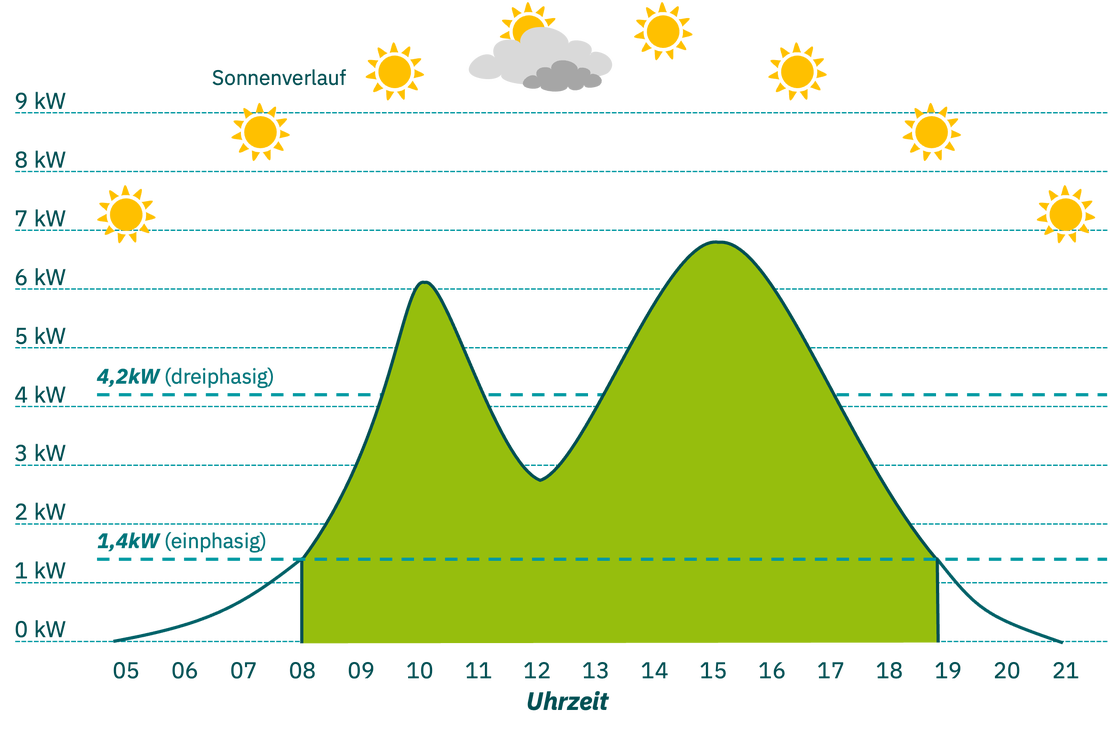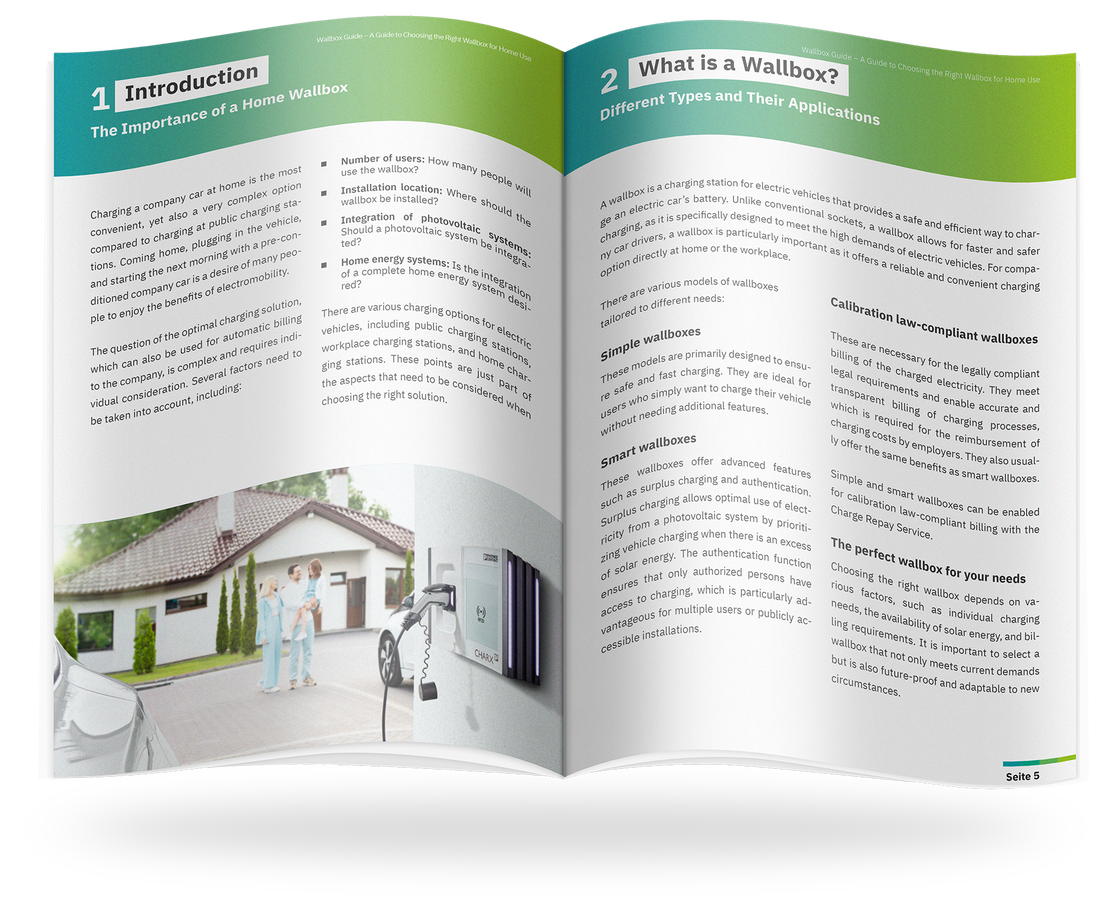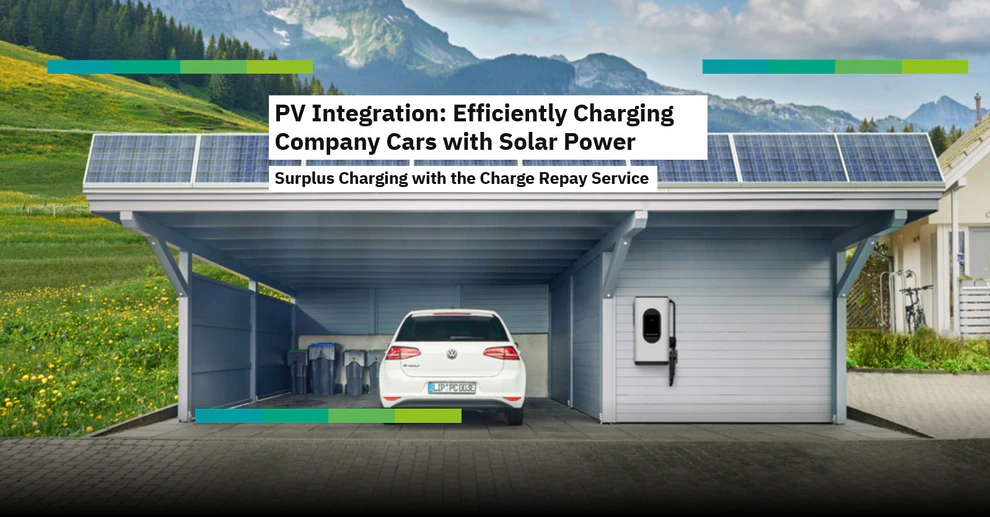In today’s world, where sustainability and renewable energy are becoming increasingly important, many companies and individuals are looking for ways to optimize their photovoltaic systems (PV). One of the most effective methods is surplus charging, where excess solar power is used to charge electric vehicles. In this blog post, we will highlight the benefits of PV integration and surplus charging and show how Phoenix Contact’s Charge Repay Service enables seamless and legally compliant billing without blocking surplus charging.
Surplus Charging: An Intelligent Method
The principle of surplus charging is an intelligent method of charging electric vehicles with excess solar power that is not consumed in the household. For efficient use of solar power, the wallbox must be able to detect when surplus power is available. Surplus power refers to the electrical energy generated by a photovoltaic system (PV system) that is not immediately consumed in the household. When the sun shines, solar cells often produce more electricity than is needed at that time. Instead of feeding this surplus power into the public grid, it can be used to charge the electric car. This maximizes the use of the renewable energy source and reduces dependence on the power grid. Surplus charging is therefore an efficient method to optimally use self-produced electricity and reduce energy costs. It is a key element for sustainable and self-sufficient energy supply in the field of electromobility.
There are various technical solutions for this
Additional Meter: Some wallboxes have an additional meter that measures whether and how much power is fed into the public grid. If power is fed into the grid, the wallbox starts the charging process or increases the power.
Data Connection to Inverter or Home Energy System: Other wallboxes can establish a direct data connection to the PV system’s inverter or home energy system. This connection allows the wallbox to detect in real-time when surplus power is available and control the charging accordingly.
The challenge with this technology lies in compatibility: there are no uniform communication protocols between wallboxes, inverters, and energy management systems. This means that a wallbox technically capable of surplus charging does not necessarily work immediately with every inverter or system. It is important to check before purchasing a wallbox whether the chosen wallbox is compatible with the existing PV system and its components or if additional adjustments are necessary. Ideally, consult the electrician who installed your PV system.
Charging Company Cars with Solar Power
Using solar power to charge company cars offers employees a sustainable and cost-efficient way to operate their company vehicles. By integrating a PV system (photovoltaic system), company cars can be charged directly with self-generated solar power. This not only reduces operating costs but also contributes to reducing CO2 emissions. A key aspect of using solar power for company cars is billing . Legally compliant billing of charging processes ensures that surplus solar power can be efficiently used to charge company cars while providing transparent and accurate billing. In surplus charging, the wallbox regulates the charging power so that as much power is used as would otherwise be fed into the grid as surplus. The wallbox usually receives the information on how much power this is from the inverter or a home energy management system. Communication between the involved components is necessary for this. Currently, there are no widespread standards defining communication between wallbox and inverter. Many systems are proprietary, meaning that only certain wallboxes (usually from the same manufacturer) can communicate with certain inverters. When replacing the wallbox, as is common with other billing solutions, existing systems are often no longer able to charge surplus.

Surplus Charging with the Charge Repay Service
Phoenix Contact’s Charge Repay Service offers an innovative solution for charging company cars at the home wallbox . A standout feature of this service is legally compliant billing that does not require changes to existing systems for surplus charging. Unlike other billing solutions, Charge Repay does not block surplus charging but enables flexible and efficient use of solar energy. The Charge Repay Service allows retrofitting regardless of the installed wallbox in the electrical supply line. This means that no communication interfaces are occupied, which would otherwise be used for communication between the inverter (photovoltaic system) and the wallbox to enable surplus charging. This allows the service to circumvent these challenges and ensure efficient use of surplus solar power without impairing existing communication paths.
Guide to choosing a Wallbox: Your comprehensive Guide!
Our guide provides you with important insights into the details you should consider before purchasing a wallbox. Learn about the key criteria to make the right choice for your home and company car.
REQUEST GUIDE
Conclusion
The integration of photovoltaic systems and surplus charging offers an excellent way to maximize the use of solar energy while reducing energy costs. By intelligently using surplus solar power, electric vehicles can be charged efficiently and environmentally friendly. Phoenix Contact’s Charge Repay Service ensures that these processes run seamlessly and legally compliant without impairing existing systems. This enables flexible and sustainable use of solar energy, which is of great benefit to both individuals and companies.




